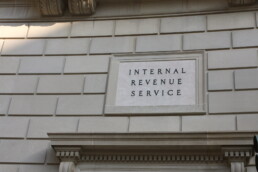Mining companies have set their sights on New York and Texas, but locals are concerned about the environmental harm in their communities.
By Alexandra Martinez, Prism
From the outside, the Greenidge power plant in Seneca Lake, New York, looks like a 1950s-era relic of New York’s coal-fired past. But behind the facade of the once moth-balled power plant, there are now 8,000 churning high-powered computers running hardware 24/7 to solve complex math problems. The computers are “mining” for Bitcoin, the leading virtual currency that is impossible to counterfeit or double-spend and which recently reached an all-time high of $68,000-per-coin valuation. To keep the computers cool, every day the facility is permitted to take in 139 million gallons of water and discharge 135 million gallons into the Keuka Outlet. The water, which can reach temperatures as high as 108 degrees Farenheit in the summer, empties directly into Seneca Lake, stressing the stream of trout and other cold-water fish and causing harmful algae blooms. The power plant, which had previously transitioned to burning natural gas to serve as a “peaker plant” for public use during times of extreme hot or cold weather, is now expressly used to serve private Bitcoin mining company Greenidge Generation LLC. As more cryptocurrency mining companies set their sights on defunct coal-fired power plants in upstate New York, locals are warning that the supposed financial revolution Bitcoin promises will also imperil emission-reduction goals and the environment.

Maralie Armstrong-Rial remembers first hearing about cryptocurrency in 2006. The artist and visiting assistant professor at Brown University and the Rhode Island School of Design was in a digital master’s program at the time but blew off the virtual currency as something only “über nerds” would use. Fifteen years later, Armstrong-Rial realized Bitcoin was not just a passing fad and thought it might be worthwhile for her to research. In learning about China’s recent decision to ban crypto mining, Armstrong-Rial realized that the method of acquiring the currency is highly energy intensive and has a large carbon footprint, which requires planting at least 300 million new trees to offset. She said she became increasingly concerned to see artists and businesspeople alike adopting the idea that cryptocurrency could somehow “save the planet” by decentralizing the banks. Now, Armstrong-Rial is among a growing group of people sounding the alarm on crypto mining and its harmful effects in Seneca Lakes.
Recent Posts
‘Unconstitutional. Unethical. Authoritarian.’ ICE Bars Millions Of Immigrants From Bond Hearings
July 18, 2025
Take Action Now One watchdog said the new policy “seems like a blatant attempt to stop them from exercising their right to due process.”……
Americans Are Not Nearly Alarmed Enough About Climate Change
July 18, 2025
Take Action Now Americans still don’t comprehend how imminent, dangerous, and far-reaching the threat is—and journalists are partly to blame.By…
The IRS Is Building A Vast System To Share Millions Of Taxpayers’ Data With ICE
July 17, 2025
Take Action Now ProPublica has obtained the blueprint for the Trump administration’s unprecedented plan to turn over IRS records to Homeland Security…
Israel’s Sudden Assault On Syria Is Unchecked Aggression
July 17, 2025
Take Action Now Jerusalem is bombing Damascus and threatening al-Sharaa’s rule, while Washington was hoping to help the nascent government on…




